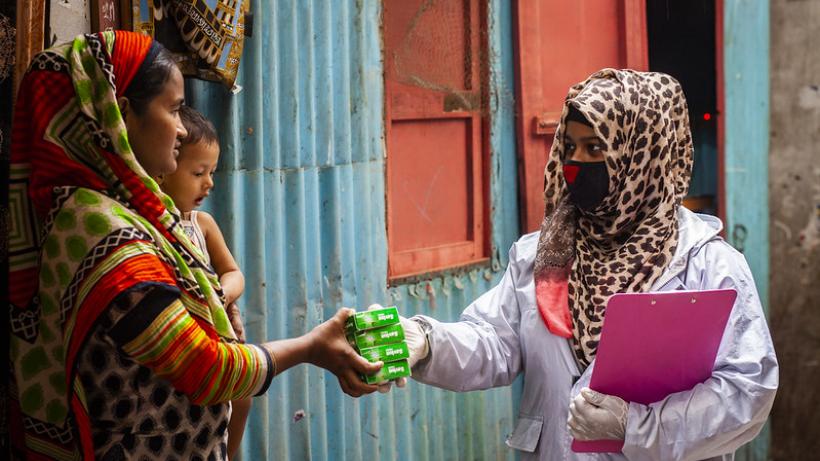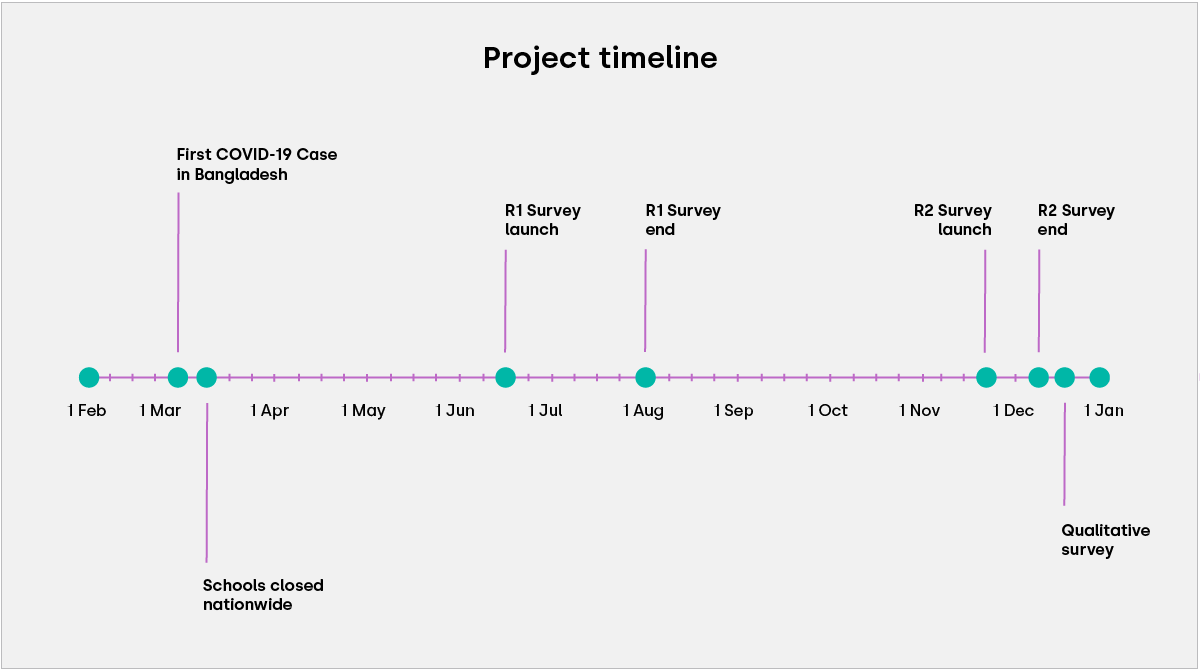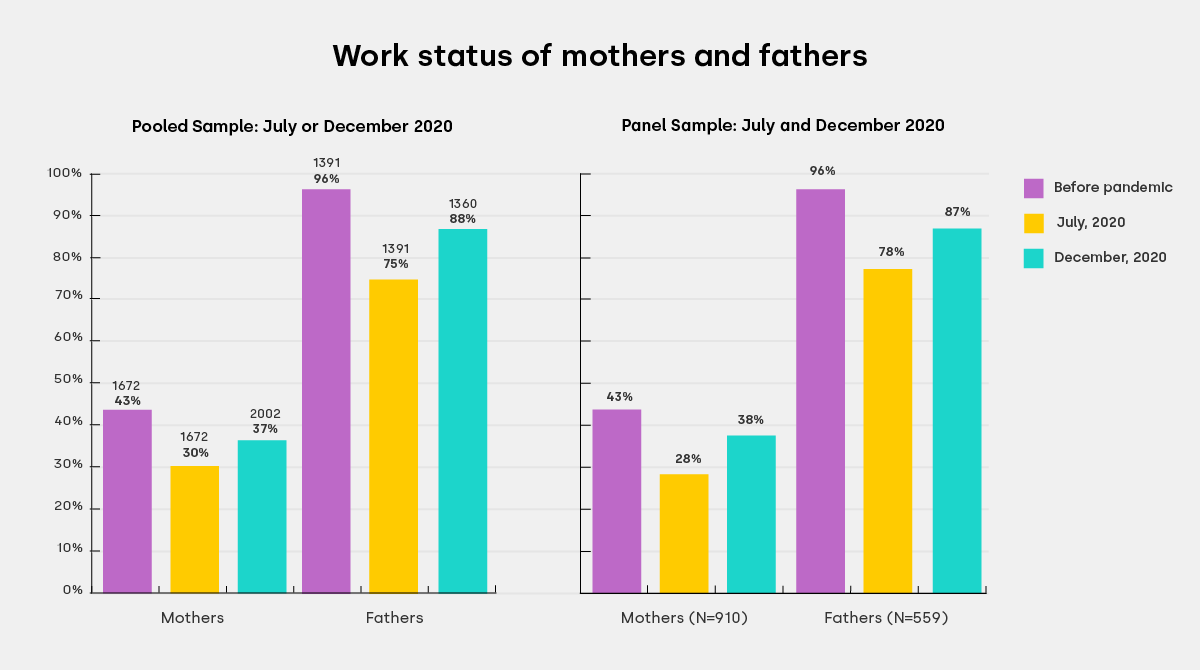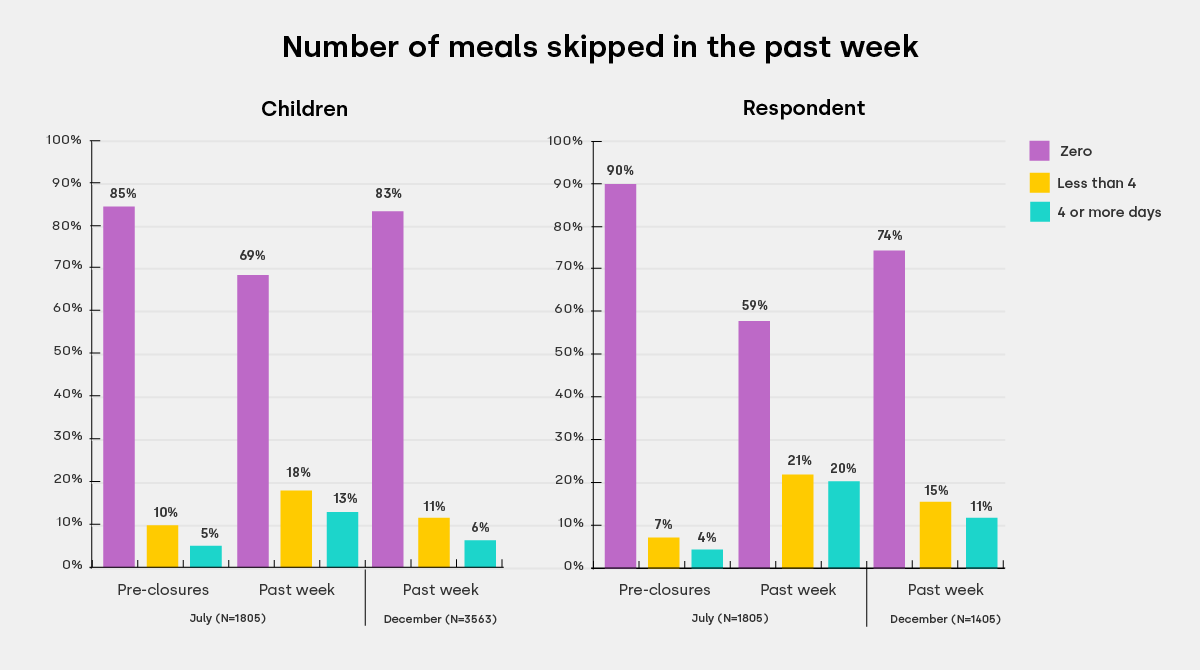
How COVID-19 affected women and children: Evidence from Bangladesh
The COVID-19 pandemic swept through the world, disrupting people and economies. Bangladesh was especially susceptible to the negative economic impacts of the pandemic because of its strong ties to the global economy. These negative demand shocks persisted throughout and after the pandemic. To explore the effects of the pandemic on women and children in vulnerable households, we conducted two rounds of phone surveys in July 2020 and December 2020. Despite earnings losses and food insecurity somewhat declining by December 2020, they persisted at least six months after the lifting of the general economic lockdown at the end of May 2020. Importantly, a large fraction of women reported greater domestic violence after the pandemic, and the mental health of mothers deteriorated significantly by December (relative to July 2020), despite reductions in economic hardship by that time. Our findings indicate several areas of need for vulnerable households, particularly in education, mental health, and gender-based violence.
Across low- and middle-income countries, the COVID-19 pandemic led to immediate and substantial reductions in income, employment, and food security. This was documented across various studies in Bangladesh which revealed closures and economic hardship disrupted children's education and threatened their food security. The economic shock and ongoing uncertainty may also have affected women's decision-making power, mental health, and the risk of domestic violence.
Studying the multidimensional impacts of COVID-19
In our research (Beam and Mukherjee 2021), we explore the multidimensional impacts of COVID-19 on household wellbeing at two distinct points in time: July 2020 (two months after the end of general lockdown in Bangladesh) and December 2020 (five months later). These two survey waves permit examination of the persistent impacts of the pandemic after the immediate lockdowns. We also supplement this quantitative work with qualitative surveys conducted in December 2020.
Our study sample consisted of relatively vulnerable, semi-urban households with children across seven regions of Bangladesh. This sample enabled us to focus on the experiences of mothers and their children over the period studied.
Each survey round consisted of a survey that targeted mothers of primary school-aged children, and respondents were asked about the impact of the pandemic on their households’ economic and food security, their own mental health, use of child discipline, and experience of intimate partner violence. We also surveyed fathers about their own earnings. In the second survey round, we reinterviewed the initial set of respondents and added a set of families with children who had progressed further in school and were interested in enrolling in grades five through eight. We employed the same strategy as in the first round, with a main survey targeting mothers and a short survey with fathers, but in the second round we add modules on children's education and fathers’ mental health.

Figure 2. Project timeline
Given the reliance on phone surveys during the pandemic, it is important to make note of response rates and final sample sizes. Our first survey round yielded 1,816 responses, with a response rate of 67%. Among mothers surveyed, we were able to survey 1,130 fathers (67%) within the same household. The second round yielded 2,263 responses, with a response rate of 57%. Among mothers surveyed, we reached 1,353 fathers (67%). We successfully interviewed 1,082 first-round respondents, for a re-contact rate of 59%. Furthermore, we supplemented these two rounds of surveys with qualitative interviews of 30 mothers conducted in December 2020.
COVID-19 increased food insecurity and economic hardships
Already vulnerable households have faced significant economic hardships due to the pandemic. More than three-quarters of mothers (77%) and nearly all fathers (90%) in our study reported a reduction in earnings since the pandemic began.
My husband's income reduced due to Corona. We had to take a loan from one of our relatives to manage the household. Also, some days my child cried [for more delicious food], but we couldn't afford that.

Figure 3. Work status of mothers and fathers
The pandemic has jeopardised food security among vulnerable households. Over 90% of households in our study reported eating less preferred foods, and nearly the same number reported reducing meals or meal sizes. While mothers reduced their own food consumption significantly, children were also reported to eat less than they did prior to the pandemic.

Figure 4. Number of meals skipped in the past week
By December 2020, economic hardship had slightly lessened. Specifically, fewer households were relying on less preferred foods or reducing the size or frequency of meals (from 92% and 87% to 75% and 59%, respectively).
Households’ coping strategies shifted as well; while only 6% had recently borrowed money from a microfinance institution or NGO to cope in July and August, 17% had done so by December 2020. Households were less likely to use savings (perhaps because they had already been depleted) or to receive assistance from extended family members, but were more likely to be looking for additional ways to find money.
COVID-19’s differential impact on women
When I had a job before, I could do anything I want. But now my husband is the only earner, I have to listen to him.
We also documented changes in women’s decision-making power, and found an increase in their reported incidence of intimate partner violence. While 40% of mothers report having less decision-making ability relative to before the closures, another 14% report having more decision-making power. Nearly 40% also report facing more violent or abusive behaviour from their husbands. In qualitative interviews, women cite husbands’ job loss and increased stress due to financial hardships as drivers of increased discord.

Since lockdown, we moved to the village with our in-laws. After coming here, I have to follow their decision and even my husband dominates me a lot.
Women report symptoms of depression and anxiety at high rates. Two-thirds of mothers report at least mild depression, based on their responses to the PHQ-9 inventory, while one-third report symptoms consistent with moderate, moderately severe, or severe depression. This hardship has not been confined to the households we interviewed – women reported feeling that both they and others in their community were stressed due to economic hardships and uncertainties brought on by the pandemic.

What is striking is that despite a reduction in economic stress, we see self-reported mental health worsening among mothers surveyed in both July and December 2020. Comparing depressive symptoms reported by mothers and fathers, we see that mothers self-report depressive symptoms at much higher rates than fathers: the average PHQ-9 score for mothers is 8 (mild depression), while the mean for fathers is 3 (none/minimal depression)
Gendered effects on children’s education
In the second round, we also collected information on children’s educational activities and mothers’ aspirations. Although school closures persisted countrywide, most children (79%) had done some form of educational activity at home. However, in qualitative surveys, the poorest households reported being much more worried about the health of their children than about their ability to continue with educational activities
Currently, students spend an average of 11 hours per week on education, and more than half received some form of tutoring in the month prior to the survey. Students were most likely to receive help from family members or tutoring from neighbours. Extremely few were using television or online resources to support their education (4% and 2%, respectively), and in qualitative surveys, most mothers described multiple barriers to continuing remote education for their children, including not being able to afford at-home investments that were needed for remote learning.
My children suffered the most due to Corona as ... everything is closed. They couldn't study properly as no one was there to help them. The time they have lost this year is really precious for their careers.
Among respondent households, girls were more likely to be engaged in educational activities than boys, though it should be kept in mind that households in this study could be differentially more likely to value girls’ education, as they were selected because they had planned to enroll a child in a UCEP school, which strives for an equal gender balance in its enrolment.
Most parents report that their children will “definitely” return to school when they re-open, and these rates are higher for girls (82%) than for boys (75%). While parents have long-run educational aspirations for their sons, boys are more likely to have taken on extra work to support their families during this crisis.
Though we married off our elder daughter, we are trying to educate our younger daughter. Since our income is unstable right now, my son is also working, he doesn't go to school.

